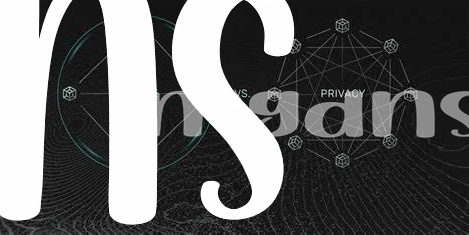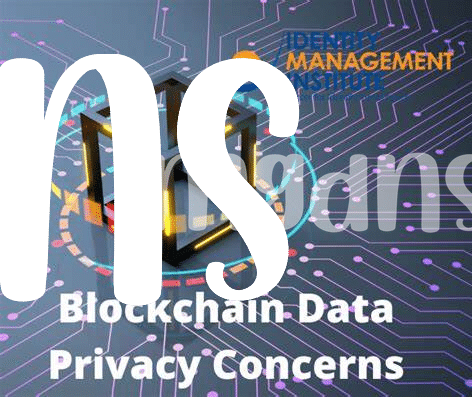The Dawn of Blockchain: a Privacy Primer 🌅

Imagine a world where every time you sent a letter, you knew it couldn’t be opened or read by anyone else along its journey. That’s kind of what the early days of blockchain technology promised for digital transactions. Born from a blend of computer science magic and a dash of finance wizardry, blockchain first stepped onto the scene with Bitcoin. Here was a way to send money across the globe without needing to trust a middle person like a bank. Each transaction, a sealed and stamped letter, was added to a chain of others, visible to everyone but tamper-proof. What made this special was not just the security but the privacy it offered. Your identity wasn’t your name but a unique code—like having a superhero’s secret identity. However, this was just the start; the roots from which a vast, branching tree of privacy measures would grow.
| 🌅 Early Days | Unique codes for identity |
| 🔒 Security | Transactions added to a tamper-proof chain |
| 🌐 Visibility | Everyone can see the transactions, not the identities |
This was the dawn—when blockchain began offering a new way to think about our digital interactions, aiming to keep our secrets safe while maintaining a transparent process. But this was just the beginning of an ongoing journey towards even stronger privacy protections.
Introducing the Mask: Pseudonymity in Early Blockchain 🎭
Imagine a world where everyone wears masks, not just for fun, but for safety. This is what early blockchain technology looked like. People could make transactions or trade without showing their real names, using digital masks called pseudonyms. It’s like having a secret identity while buying a comic book or trading cards with others around the globe. This “mask-wearing” made folks feel more private and secure, as if they were part of an exclusive club with a secret handshake. But, as with all secret clubs, there were people eager to peek behind the masks. The digital world started to notice cracks in the armor, showing that even masked superheroes could have their secrets uncovered. This discovery set the stage for a quest to build better, more robust masks. To understand more about these vulnerabilities and why they’re significant, dive into this exploration at https://wikicrypto.news/blockchain-broken-down-security-threats-you-should-know, delving into the complexities and the journey towards securing our digital identities.
Cracking the Code: Vulnerabilities Exposed 🚨

In the early days, blockchain was like a shiny new toy that promised to keep our secrets safe. But just like with any toy, it wasn’t long before people started finding the weak spots. The idea was simple: your details were hidden behind complex codes. However, curious minds and clever hackers saw it more as a challenge than a barrier. They put their brains to work, picking apart these digital locks in ways no one expected. This wasn’t just about peeking into someone’s transactions; it was about uncovering the flaws in a system many thought was foolproof. 🚨🔍💡 The community had to face the music: their fortress had some pretty significant cracks. This realization sparked a wave of innovation, pushing developers to think harder and come up with smarter solutions to protect our digital treasure chests.
Enhanced Cloaks: the Rise of Zero-knowledge Proofs 🛡️

Imagine going to a party where you’re wearing a magical cloak that lets you enjoy the festivities without anyone knowing who you are. That’s kind of what zero-knowledge proofs (ZKPs) do in the world of blockchain technology. They are like sophisticated disguises for transactions that allow you to prove you know something without revealing what that something is. This innovation marked a significant evolution in how privacy could be maintained within these digital systems. Initially, when someone talked about keeping things hidden on the blockchain, it was more about using a fake name or a number that could still be traced back with some effort. But with the advent of ZKPs, the game changed. It became possible to participate in the digital dance without showing your moves or even letting others know you were on the dance floor. This development didn’t just add an extra layer of privacy; it transformed the blockchain into a more secure and trustless environment. Transactions could now occur without the need to reveal sensitive information, fostering a new era of digital interactions. This leap in technology dovetails with a growing demand for privacy, inspiring confidence and opening doors to new possibilities in blockchain applications. For those curious about how far we’ve come in securing privacy in digital transactions and where this might lead, learning about bitcoin historical price trends and the blockchain can offer invaluable insights. As we look ahead, the fabric of these digital interactions continues to evolve, weaving ZKPs into the very heart of blockchain’s future.
Private Chains: Creating Secluded Spaces 🌲
Imagine finding a cozy, hidden glade deep within a forest, where you can speak freely, knowing no one else can hear. This is what it’s like stepping into the world of private blockchain networks. Unlike their open-to-everyone counterparts, these secluded spaces ensure that what happens within the network stays there. They offer a level of privacy akin to a members-only club, where transactions and information are shared among the initiated, away from prying eyes. It’s like whispering in a crowded room where only those who are meant to hear you can.
The appeal of these private networks lies in their ability to provide both security and confidentiality, catering to businesses and individuals alike who prioritize privacy above all else. However, creating such a secluded space is no small feat. It requires a careful balancing act of access controls and encryption, much like fitting a lock to a diary. The table below highlights the core features that make private blockchain networks stand out, ensuring they remain exclusive yet inclusive for members.
| Feature | Description |
|---|---|
| Access Control | Strict rules on who can enter the network and participate. |
| Encryption | Advanced techniques to keep data within the network secure. |
| Confidentiality | Ensures information is only accessible to authorized members. |
The Future Unveiled: Predicting Privacy’s Path 🚀

As we peer into the crystal ball of blockchain’s future, it’s like standing at the edge of a vast, unknown digital landscape. The quest for privacy has always been at the heart of the blockchain community, and it’s set to transform in ways we can only begin to imagine. Advances in technology promise a world where transactions are not just private but synonymous with absolute security. Imagine conducting business or personal transactions with the assurance that your information is not just protected, but invisible, leaving no digital footprint behind. This future isn’t just a dream but a very real possibility thanks to the ingenious minds working behind the scenes today.
In this evolving space, the importance of staying informed cannot be overstated, especially when considering the intricacies of bitcoin in e-commerce and the blockchain. As we navigate through these changes, understanding the potential risks and rewards is crucial. The path ahead is both exciting and unpredictable, offering a new era of privacy that could redefine our online interactions. The commitment to innovation within the blockchain community signals a future where privacy is not just an option but a fundamental right, embedded in the very fabric of our digital existence.
